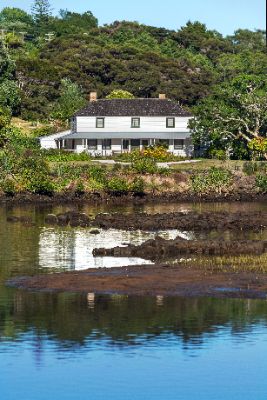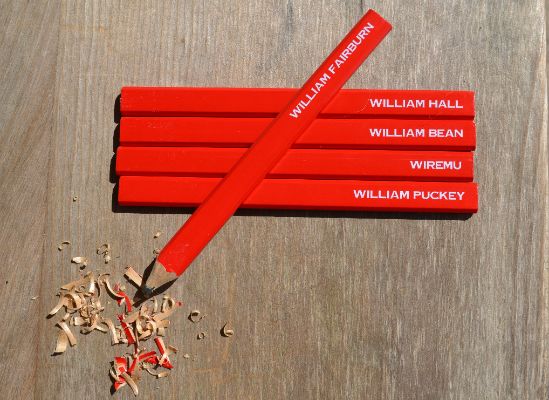Kemp House Celebrates Milestone Anniversary
New Zealand is set to observe a very special anniversary on Friday [March 25].
Kemp House in Kerikeri – which is cared for by Heritage New Zealand Pouhere Taonga, and is the country’s oldest building – celebrates 200 years since people first began to live under its roof.
And to mark the anniversary, admission to Kemp House on Friday will be free to all visitors.

It was two centuries ago on Friday that missionary Rev John Butler, his wife Hannah, their teenage son Samuel and daughter, also named Hannah, officially moved their stuff into what would become their new home.
Butler – writing in his journal on Monday March 25 – records simply, ‘Moving things into the new house’. The ‘new house’ he refers to still stands on its original spot in the Kerikeri Basin under the shadow of Kororipo, the pā of Ngāpuhi rangatira and mission protector, Hongi Hika.
The simple wooden building has survived the Musket Wars, the dregs of British soldiery being billeted on site, the threat of fire and several major flood events over the past 200 years.
For Butler and his family, moving into what we now know as Kemp House was something of a ‘soft launch’ according to Kerikeri Mission Station Property Lead Liz Bigwood.
“The house had largely been completed, though there had been a bit of activity inside and outside before the Butlers officially moved in,” she says.
“A meal had been enjoyed there, and fellow missionary William Fairburn had put up some shelves a week earlier – one of our earliest attempts at DIY which is still visible today. The key anniversary for us, though, is when the Butlers moved in signalling the beginning of a very long history as a family home.”
Kemp House – now a Tohu Whenua – was not to be inhabited by the Butlers for long, however. After a falling out between John Butler and mission Kingpin Rev Samuel Marsden, the Butlers – with the exception of son Samuel – found themselves leaving New Zealand on the outgoing tide on November 14 1823.
In later years, missionaries James Kemp and his wife Charlotte moved in, with the house remaining in the Kemp family until the mid-1970s.
“Kemp House is an important remnant of early contact between Māori and Pākehā and was built by missionary carpenters and Māori sawyers,” says Liz.
“We wanted to celebrate the memory of the key people behind the construction of the house – all of whom were called William, which must have made for some interesting communication issues on the construction site.”
The names of Williams Bean, Fairburn, Puckey and Hall have been memorialised in a special 5-pack of commemorative carpenter’s pencils available for purchase. The fifth pencil has been named simply ‘Wiremu’ to acknowledge the Māori sawyers and builders who worked with the missionaries, and whose names have been lost over time.

“The house was built from locally milled native timbers and incorporated roof shingles from Australia. Originally it was only one room deep, though it was later extended to include a number of lean-tos,” she says.
“This included a school room where Martha Clarke and later Charlotte Kemp provided domestic training and other tuition for Māori children including the daughters of chiefs Hongi, Rewa and Wharerahi.”
In 2000 two writing slates were uncovered during restoration work under the Kemp House floorboards highlighting the educational activity that was taking place here. Both slates have words in Te Reo permanently and deliberately etched into them.
“The first slate found is signed ‘Nā Rongo Hongi a(ged) 16’. Rongo Hongi was the daughter of Ngāpuhi chief Hongi Hika. Rongo lived with the Kemp family, leaving only to be with her father and mother during important occasions and to tend to her father after he had been injured in battle,” she says.
“She later returned to the Kemps after his passing moving into Kemp House with them in 1832. She was later baptised, taking the name Hariata after Charlotte – and after marrying Hone Heke she moved out of the house.”
The second slate is an early waiata whakautu [a song in reply] etched on it. In 2018 both slates were added to the UNESCO Memory of the World documentary heritage register
“The slates are two unique and irreplaceable taonga that Heritage New Zealand Pouhere Taonga has the privilege of caring for on behalf of the Crown and Ngāpuhi. Both are on permanent display at Kemp House and are the only known slates with Te Reo Māori writing from this era.”
After the mission folded in 1848, the Kemps continued to live in the house, operating a kauri gum business from the neighbouring Stone Store. The house and gardens were passed down through the family until Ernest Kemp – great-grandson of James and Charlotte – gifted the house to the nation in 1974 through the New Zealand Historic Places Trust, now Heritage New Zealand Pouhere Taonga.
“Since about the mid-1970s Kemp House has been a must-see for visitors to Northland, and thousands of New Zealanders and people from overseas have explored our oldest building and heard stories about some of the earliest interactions between Māori and Pākehā,” says Liz.
“Kemp House occupies a place in the hearts of many New Zealanders and will be enjoyed and admired for many years to come.”


 Whanganui Regional Museum: Historic Wedding Dress Unveiled, A Piece Of Marton’s Heritage
Whanganui Regional Museum: Historic Wedding Dress Unveiled, A Piece Of Marton’s Heritage Donovan Ryan: Local Runner Takes Out Frontrunner Christchurch Marathon
Donovan Ryan: Local Runner Takes Out Frontrunner Christchurch Marathon University of Auckland: Tributes Flow For Much Loved Pacific Leader Melegalenu’u Ah Sam
University of Auckland: Tributes Flow For Much Loved Pacific Leader Melegalenu’u Ah Sam NZEI: Ministry Of Education Cuts Will Disproportionately Affect Pasifika
NZEI: Ministry Of Education Cuts Will Disproportionately Affect Pasifika Day One Hapai te Haeata: Call To Action For Young Filmmakers Against The Backdrop Of Funding Cuts
Day One Hapai te Haeata: Call To Action For Young Filmmakers Against The Backdrop Of Funding Cuts Toyota New Zealand: Three Races For Top Three To Decide TR86 Title
Toyota New Zealand: Three Races For Top Three To Decide TR86 Title